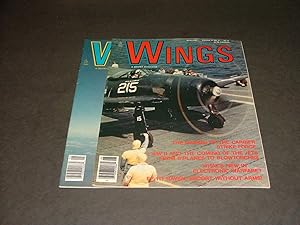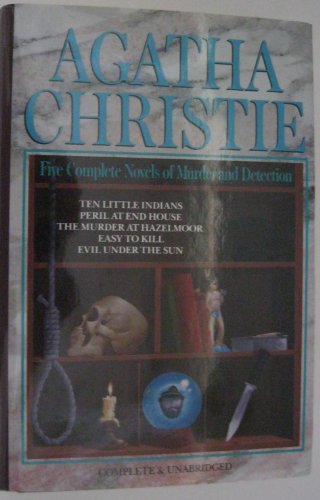wings united states (33 results)
Product Type
- All Product Types
- Books (32)
- Magazines & Periodicals (1)
- Comics
- Sheet Music
- Art, Prints & Posters
- Photographs
- Maps
- Manuscripts & Paper Collectibles
Condition
Binding
Collectible Attributes
Free Shipping
- Free US Shipping
Seller Location
Seller Rating
-
The Witching Voice: A Novel from the Life of Robert Burns
Published by Wings Press, United States, San Antonio, TX, 2009
ISBN 10: 0916727440ISBN 13: 9780916727444
Seller: WorldofBooks, Goring-By-Sea, WS, United Kingdom
Book
Paperback. Condition: Very Good. The turbulent artistic and romantic life of Robert Burns, the premier icon of the Romantic movement, is creatively re-enacted in this contemporary tribute to the drama and texture of late 18th-century Scotland. Based on extensive research and historical fact, Burns' life at the height of his fame from 1784 to 1788 is portrayed as spontaneous, passionate, and sexual. Told in the present tense through multiple viewpoints, Burns' story is a frank and moving portrait of a man often misguided by the 'witching voice' that motivated him - a drive composed of the same charms, demons, and shortcomings that nurtured his remarkable gifts. The book has been read, but is in excellent condition. Pages are intact and not marred by notes or highlighting. The spine remains undamaged.
-
Warriors in the Mist: A Medieval Dark Fantasy
Published by Blue Wing Publications, Workshops, and Lectures, United States, Tualatin, 2007
ISBN 10: 0979566312ISBN 13: 9780979566318
Seller: WorldofBooks, Goring-By-Sea, WS, United Kingdom
Book
Paperback. Condition: Very Good. The book has been read, but is in excellent condition. Pages are intact and not marred by notes or highlighting. The spine remains undamaged.
-
Three Complete Novels: Tim, an Indecent Obsession, the Ladies of Missalonghi
Published by Wings, United States, 1999
ISBN 10: 0517201666ISBN 13: 9780517201664
Seller: WorldofBooks, Goring-By-Sea, WS, United Kingdom
Book
Paperback. Condition: Very Good. The book has been read, but is in excellent condition. Pages are intact and not marred by notes or highlighting. The spine remains undamaged.
-
The Country Diary Herbal
Published by Wings Books, United States of America, 1990
ISBN 10: 0517122928ISBN 13: 9780517122921
Seller: Merandja Books, Cornwall, United Kingdom
Book First Edition
Hardcover. Condition: Very Good. Dust Jacket Condition: Fine. First Edition. A hardback book with both book and jacket in very good to fine condition, dated 1990. Inscription at the top of the first blank introductory page of the book else book is in fine condition.
-
The Complete Office Handbook hc Mary A DeVries 1993 Wings Books
Published by Wings Books, United States, 1993
Seller: Joseph M Zunno, ROY, WA, U.S.A.
Book
hard. Condition: See Pic.
-
Air Awakens (Air Awakens Series Book 1)
Published by Silver Wing Press 2015-08-27, [United States], 2015
ISBN 10: 1932549935ISBN 13: 9781932549935
Seller: Blackwell's, London, United Kingdom
Book
paperback. Condition: New. Language: eng.
-
2 Iss Wings Jun, 1987, Aug 1988 F-16, Camouflage, Schneider Cup, '47 F-15
Published by Wings, United States
Seller: Joseph M Zunno, ROY, WA, U.S.A.
Magazine / Periodical
soft. Condition: See Pic. Two Vintage Issues Of Wings MagazineJune, 1987 & August, 1988Average Condition: Color & gloss are very good but there is some light scuffing & surface dirt present, very little corner wear, a few tiny spine stress marks, interiors are very clean. Probably Never Read.
-
Growing Wings Self-Discovery Workbook: 17 Workshops to a Better Life-Vol. 1 (Self-Improvement, Personal Growth and Transformation): v. 1
Published by Blue Wing Publications, Workshops, and Lectures, United States, Tualatin, 2008
ISBN 10: 0979566320ISBN 13: 9780979566325
Seller: WorldofBooks, Goring-By-Sea, WS, United Kingdom
Book
Paperback. Condition: Very Good. The book has been read, but is in excellent condition. Pages are intact and not marred by notes or highlighting. The spine remains undamaged.
-
Indian Signals and Sign Language
Published by Wings, United States, 1991
ISBN 10: 0517466120ISBN 13: 9780517466124
Seller: Books of the Smoky Mountains, Del Rio, TN, U.S.A.
Book
Condition: very good. Gently used book with ongoing seller support until you're fully satisfied with your purchase.
More buying choices from other sellers on AbeBooks
New offers from US$ 30.15
Used offers from US$ 22.81
Also find Hardcover
-
Quixotic Fantasy
Published by Wings ePress, Incorporated, United States, 2003
ISBN 10: 1590888383ISBN 13: 9781590888384
Seller: Open Vault Books, Mesa, AZ, U.S.A.
Book First Edition Signed
Soft cover. Condition: Near Fine. 1st Edition. Wings E-Press, 2003, Paperback Original First Edition, February, 2003. Inscribed and dated by the author on the full title page. 308 pages. Condition: Near Fine: The spine is straight with a slight bump on the heel, else the spine is clean. The front cover shows a tiny corner pinch, else is clean. The back cover is clean. The text pages are white and unmarked. The promo page and the inside of the front cover show two tiny marks. The page edges are clean. The book is tightly bound and unread. This book will be shipped after receipt of payment in an archival bag and bubble wrapped in a new box with a USPS tracking number. International buyers: books heavier than one pound (including this one) will require additional shipping charges. Inscribed by Author(s).
-
The Secret of Santa Claus
Published by Keith Wing United States,, 2021
ISBN 10: 194147540XISBN 13: 9781941475409
Seller: Front Cover Books, Denver, CO, U.S.A.
Book
Condition: new. Dinunzio, Rachel (illustrator).
-
A Thieving Curse (The Miraveld Chronicles)
Published by Wyvern Wing Press United States,, 2021
ISBN 10: 1734467673ISBN 13: 9781734467673
Seller: Front Cover Books, Denver, CO, U.S.A.
Book
Condition: new.
-
Alien Energy: UFOs, Ritual Landscapes and the Human Mind
Published by Eagle Wing Books Inc. United States,, 2003
ISBN 10: 0940829371ISBN 13: 9780940829374
Seller: Front Cover Books, Denver, CO, U.S.A.
Book
Condition: new.
-
The Crown's Dog (Golden Guard Trilogy)
Published by Silver Wing Press United States,, 2016
ISBN 10: 1619845911ISBN 13: 9781619845916
Seller: Front Cover Books, Denver, CO, U.S.A.
Book
Condition: new.
-
RCD/SWESS Arming [Typed Memorandum]
Published by United States Air Force, 456th Strategic Aerospace Wing (SAC), Headquarters, Beale Air Force Base, CA, 1963
Seller: Ground Zero Books, Ltd., Silver Spring, MD, U.S.A.
Condition: Good. Format is a single sheet, approximately 8 inches by 10.5 inches, with three holes punched in the left side. This memorandum, issued 22 May 1963, shows some wear and soiling. This type of operational communication within the SAC organization rarely survives. The author, Major Dominick J. Sacco was at the time a major in the USAF and Chief, Air Weapons Section of the 456th Strategic Aerospace Wing (SAC), Headquarters located at Beale Air Force Base in California. The 456th Bombardment Wing is an inactive United States Air Force unit. It was last assigned to the 14th Air Division of Strategic Air Command at Beale Air Force Base, California, where it was inactivated on 30 September 1975. The wing was redesignated the 456th Strategic Aerospace Wing and was activated at Beale Air Force Base, California in February 1963. It flew Boeing B-52 Stratofortress bombers and Boeing KC-135 Stratotanker air refueling aircraft, and also commanded a HGM-25A Titan I squadron until 1965. Although it operated no intercontinental ballistic missiles after then, it was not until July 1972 that the wing was redesignated the 456th Bombardment Wing. The wing was inactivated in September 1975 and its personnel, equipment, and mission transferred to the 17th Bombardment Wing, which moved to Beale on paper from Wright-Patterson Air Force Base, Ohio. The contents of this Memorandum was intended to clarify operation of the RCD, especially regarding the operation of the SWESS. The memorandum stressed that to achieve SWESS arming the RCD must first be connected and the light must be on. RCD is understood to mean radar cable detection. SWESS is understood to mean Special Weapons Emergency Separation System. This system (SWESS), also known informally as the dead man's switch, was a nuclear bomb release system that the United States Air Force Strategic Air Command built into bombers such as the B-52 Stratofortress. The system's purpose was to ensure that an aircraft's payload of nuclear weapons would detonate in the event of the crew becoming debilitated by enemy defenses such as missiles. Once armed, the system would ensure that the onboard nuclear weapons detonated if the aircraft dropped below a predetermined altitude. The North American Aviation AGM-28 Hound Dog was a supersonic, turbojet-propelled, nuclear armed, air-launched cruise missile developed in 1959 for the United States Air Force. It was primarily designed to be capable of attacking Soviet ground-based air defense sites prior to a potential air attack by B-52 Stratofortress long range bombers during the Cold War. The Hound Dog was first given the designation B-77, then redesignated GAM-77, and finally AGM-28. The Hound Dog continued to be deployed for a total of 15 years until its replacement by newer missiles, including the AGM-69 SRAM and then the AGM-86 ALCM. Single sheet, typed on one side Presumed to be one of only a few multiple copies produced for distribution, with a reproduced signature of the author.
-
Use of "RCD" and "SWESS" [Typed Memorandum]
Published by United States Air Force, 456th Strategic Aerospace Wing (SAC), Headquarters, Beale Air Force Base, CA, 1963
Seller: Ground Zero Books, Ltd., Silver Spring, MD, U.S.A.
Condition: Good. Format is a single sheet, approximately 8 inches by 10.5 inches, with three holes punched in the left side. This memorandum, issued 8 April 1963, shows some wear and soiling. This type of operational communication within the SAC organization rarely survives. The author, Joseph G. Hutchinson was at the time a Lt. Col. in the USAF and Chief, Standardization Division of the 456th Strategic Aerospace Wing (SAC), Headquarters located at Beale Air Force Base in California. The 456th Bombardment Wing is an inactive United States Air Force unit. It was last assigned to the 14th Air Division of Strategic Air Command at Beale Air Force Base, California, where it was inactivated on 30 September 1975. The wing was redesignated the 456th Strategic Aerospace Wing and was activated at Beale Air Force Base, California in February 1963. It flew Boeing B-52 Stratofortress bombers and Boeing KC-135 Stratotanker air refueling aircraft, and also commanded a HGM-25A Titan I squadron until 1965. Although it operated no intercontinental ballistic missiles after then, it was not until July 1972 that the wing was redesignated the 456th Bombardment Wing. The wing was inactivated in September 1975 and its personnel, equipment, and mission transferred to the 17th Bombardment Wing, which moved to Beale on paper from Wright-Patterson Air Force Base, Ohio. The contents of this Memorandum, issued to the 744th Bomb Squadron stated that if GAM-77 were aboard the "RCD" will not be connected and the pilots readiness switch cover will remain closed and sealed. It addressed other safety measures. RCD is understood to mean radar cable detection. SWESS is understood to mean Special Weapons Emergency Separation System. This system (SWESS), also known informally as the dead man's switch, was a nuclear bomb release system that the United States Air Force Strategic Air Command built into bombers such as the B-52 Stratofortress. The system's purpose was to ensure that an aircraft's payload of nuclear weapons would detonate in the event of the crew becoming debilitated by enemy defenses such as missiles. Once armed, the system would ensure that the onboard nuclear weapons detonated if the aircraft dropped below a predetermined altitude. The North American Aviation AGM-28 Hound Dog was a supersonic, turbojet-propelled, nuclear armed, air-launched cruise missile developed in 1959 for the United States Air Force. It was primarily designed to be capable of attacking Soviet ground-based air defense sites prior to a potential air attack by B-52 Stratofortress long range bombers during the Cold War. The Hound Dog was first given the designation B-77, then redesignated GAM-77, and finally AGM-28. The Hound Dog continued to be deployed for a total of 15 years until its replacement by newer missiles, including the AGM-69 SRAM and then the AGM-86 ALCM. The author may have been the Joseph G. Hutchison (1920-2004) who served 30 years in the Air Force as a pilot, flying and participating in World War II, Korean and Vietnam wars, including assignments at the Panama Canal, Berlin Airlift, Germany, Guam, England and Turkey. Single sheet, typed on one side Presumed to be one of only a few multiple copies produced for distribution, with a reproduced signature of the author.
-
Navigator's and Radar Navigator's Information Letter [Typed Memorandum]
Published by United States Air Force, 456th Strategic Aerospace Wing (SAC), Headquarters, Beale Air Force Base, CA, 1964
Seller: Ground Zero Books, Ltd., Silver Spring, MD, U.S.A.
Condition: Good. Format is approximately 8 inches by 10.5 inches, with three holes punched in the left side. This document contains 2 pages, one sheet printed on both sides. This memorandum, issued 18 May 1964, shows some wear and soiling. This type of operational communication within the SAC organization rarely survives. The author,Lt. Colonel, USAF was Chief of the Bomb/Nav Branch of the 456th Strategic Aerospace Wing (SAC), Headquarters located at Beale Air Force Base in California It was address to all B-52G Navigators and Radar Navigators. The 456th Bombardment Wing is an inactive United States Air Force unit. It was last assigned to the 14th Air Division of Strategic Air Command at Beale Air Force Base, California, where it was inactivated on 30 September 1975. The wing was redesignated the 456th Strategic Aerospace Wing and was activated at Beale Air Force Base, California in February 1963. It flew Boeing B-52 Stratofortress bombers and Boeing KC-135 Stratotanker air refueling aircraft, and also commanded a HGM-25A Titan I squadron until 1965. Although it operated no intercontinental ballistic missiles after then, it was not until July 1972 that the wing was redesignated the 456th Bombardment Wing. The wing was inactivated in September 1975 and its personnel, equipment, and mission transferred to the 17th Bombardment Wing, which moved to Beale on paper from Wright-Patterson Air Force Base, Ohio. This letter noted that for the AGM-28, crew were required to "ground fly" each programming leg by utilizing scope photography available at Target Study. The author, Frank S. Vrablick served in the US Air Force for 24 years as a Radar Navigator Bombardier, retiring in 1966 as a Lt. Col. Chief of Bomb Nav. After retirement he earned a BA at the University of Omaha. The North American Aviation AGM-28 Hound Dog was a supersonic, turbojet-propelled, nuclear armed, air-launched cruise missile developed in 1959 for the United States Air Force. It was primarily designed to be capable of attacking Soviet ground-based air defense sites prior to a potential air attack by B-52 Stratofortress long range bombers during the Cold War. The Hound Dog was first given the designation B-77, then redesignated GAM-77, and finally AGM-28. The Hound Dog continued to be deployed for a total of 15 years until its replacement by newer missiles, including the AGM-69 SRAM and then the AGM-86 ALCM. Single sheet, typed on both sides Presumed to be one of only a few multiple copies produced for distribution, with a reproduced signature of the author.
-
Navigator's and Radar Navigator's Information Letter [Typed Memorandum]
Published by United States Air Force, 456th Strategic Aerospace Wing (SAC), Headquarters, Beale Air Force Base, CA, 1964
Seller: Ground Zero Books, Ltd., Silver Spring, MD, U.S.A.
Condition: Good. Format is approximately 8 inches by 10.5 inches, with three holes punched in the left side. This document contains 2 pages, one sheet printed on both sides. This memorandum, issued 1 June 1964, shows some wear and soiling. Item 7 was crossed out in pencil. This type of operational communication within the SAC organization rarely survives. The author, Lt. Colonel, USAF was Chief of the Bomb/Nav Branch of the 456th Strategic Aerospace Wing (SAC), Headquarters located at Beale Air Force Base in California. It was address to all B-52G Navigators and Radar Navigators. The 456th Bombardment Wing is an inactive United States Air Force unit. It was last assigned to the 14th Air Division of Strategic Air Command at Beale Air Force Base, California, where it was inactivated on 30 September 1975. The wing was redesignated the 456th Strategic Aerospace Wing and was activated at Beale Air Force Base, California in February 1963. It flew Boeing B-52 Stratofortress bombers and Boeing KC-135 Stratotanker air refueling aircraft, and also commanded a HGM-25A Titan I squadron until 1965. Although it operated no intercontinental ballistic missiles after then, it was not until July 1972 that the wing was redesignated the 456th Bombardment Wing. The wing was inactivated in September 1975 and its personnel, equipment, and mission transferred to the 17th Bombardment Wing, which moved to Beale on paper from Wright-Patterson Air Force Base, Ohio. This letter noted that for the AGM-28, that simulated launch required new program leg route information. The author, Frank S. Vrablick served in the US Air Force for 24 years as a Radar Navigator Bombardier, retiring in 1966 as a Lt. Col. Chief of Bomb Nav. After retirement he earned a BA at the University of Omaha. The North American Aviation AGM-28 Hound Dog was a supersonic, turbojet-propelled, nuclear armed, air-launched cruise missile developed in 1959 for the United States Air Force. It was primarily designed to be capable of attacking Soviet ground-based air defense sites prior to a potential air attack by B-52 Stratofortress long range bombers during the Cold War. The Hound Dog was first given the designation B-77, then redesignated GAM-77, and finally AGM-28. The Hound Dog continued to be deployed for a total of 15 years until its replacement by newer missiles, including the AGM-69 SRAM and then the AGM-86 ALCM. Single sheet, typed on both sides Presumed to be one of only a few multiple copies produced for distribution, with a reproduced signature of the author.
-
Navigator's and Radar Navigator's Information Letter [Typed Memorandum]
Published by United States Air Force, 456th Strategic Aerospace Wing (SAC), Headquarters, Beale Air Force Base, CA, 1964
Seller: Ground Zero Books, Ltd., Silver Spring, MD, U.S.A.
Condition: Good. Format is approximately 8 inches by 10.5 inches, with three holes punched in the left side. This document contains 2 pages, one sheet printed on both sides. This memorandum, issued 1 May 1964, shows some wear and soiling. Item 6 on the front side is penciled through. This type of operational communication within the SAC organization rarely survives. The author,Lt. Colonel, USAF was Chief of the Bomb/Nav Branch of the 456th Strategic Aerospace Wing (SAC), Headquarters located at Beale Air Force Base in California It was address to all B-52G Navigators and Radar Navigators. The 456th Bombardment Wing is an inactive United States Air Force unit. It was last assigned to the 14th Air Division of Strategic Air Command at Beale Air Force Base, California, where it was inactivated on 30 September 1975. The wing was redesignated the 456th Strategic Aerospace Wing and was activated at Beale Air Force Base, California in February 1963. It flew Boeing B-52 Stratofortress bombers and Boeing KC-135 Stratotanker air refueling aircraft, and also commanded a HGM-25A Titan I squadron until 1965. Although it operated no intercontinental ballistic missiles after then, it was not until July 1972 that the wing was redesignated the 456th Bombardment Wing. The wing was inactivated in September 1975 and its personnel, equipment, and mission transferred to the 17th Bombardment Wing, which moved to Beale on paper from Wright-Patterson Air Force Base, Ohio. This letter noted that for the AGM-28, the :High Pressure Warning Light: had been disconnected but one could 'press-to-test' this light. The author, Frank S. Vrablick served in the US Air Force for 24 years as a Radar Navigator Bombardier, retiring in 1966 as a Lt. Col. Chief of Bomb Nav. After retirement he earned a BA at the University of Omaha. The North American Aviation AGM-28 Hound Dog was a supersonic, turbojet-propelled, nuclear armed, air-launched cruise missile developed in 1959 for the United States Air Force. It was primarily designed to be capable of attacking Soviet ground-based air defense sites prior to a potential air attack by B-52 Stratofortress long range bombers during the Cold War. The Hound Dog was first given the designation B-77, then redesignated GAM-77, and finally AGM-28. The Hound Dog continued to be deployed for a total of 15 years until its replacement by newer missiles, including the AGM-69 SRAM and then the AGM-86 ALCM. Single sheet, typed on both sides Presumed to be one of only a few multiple copies produced for distribution, with a reproduced signature of the author.
-
Navigator's and Radar Navigator's Information Letter [Typed Memorandum]
Published by United States Air Force, 456th Strategic Aerospace Wing (SAC), Headquarters, Beale Air Force Base, CA, 1964
Seller: Ground Zero Books, Ltd., Silver Spring, MD, U.S.A.
Condition: Good. Format is approximately 8 inches by 10.5 inches, with three holes punched in the left side. This document contains 2 pages, one sheet printed on both sides. This memorandum, issued 15 June 1964, shows some wear and soiling. This type of operational communication within the SAC organization rarely survives. The author, Lt. Colonel, USAF was Chief of the Bomb/Nav Branch of the 456th Strategic Aerospace Wing (SAC), Headquarters located at Beale Air Force Base in California. It was address to all B-52G Navigators and Radar Navigators. The 456th Bombardment Wing is an inactive United States Air Force unit. It was last assigned to the 14th Air Division of Strategic Air Command at Beale Air Force Base, California, where it was inactivated on 30 September 1975. The wing was redesignated the 456th Strategic Aerospace Wing and was activated at Beale Air Force Base, California in February 1963. It flew Boeing B-52 Stratofortress bombers and Boeing KC-135 Stratotanker air refueling aircraft, and also commanded a HGM-25A Titan I squadron until 1965. Although it operated no intercontinental ballistic missiles after then, it was not until July 1972 that the wing was redesignated the 456th Bombardment Wing. The wing was inactivated in September 1975 and its personnel, equipment, and mission transferred to the 17th Bombardment Wing, which moved to Beale on paper from Wright-Patterson Air Force Base, Ohio. This letter noted that for the AGM-28, no 'test' AGM-28 impacts were permitted on a FSAGA unless specifically directed to do so before takeoff. The author, Frank S. Vrablick served in the US Air Force for 24 years as a Radar Navigator Bombardier, retiring in 1966 as a Lt. Col. Chief of Bomb Nav. After retirement he earned a BA at the University of Omaha. The North American Aviation AGM-28 Hound Dog was a supersonic, turbojet-propelled, nuclear armed, air-launched cruise missile developed in 1959 for the United States Air Force. It was primarily designed to be capable of attacking Soviet ground-based air defense sites prior to a potential air attack by B-52 Stratofortress long range bombers during the Cold War. The Hound Dog was first given the designation B-77, then redesignated GAM-77, and finally AGM-28. The Hound Dog continued to be deployed for a total of 15 years until its replacement by newer missiles, including the AGM-69 SRAM and then the AGM-86 ALCM. Single sheet, typed on both sides Presumed to be one of only a few multiple copies produced for distribution, with a reproduced signature of the author.
-
Navigator's and Radar Navigator's Information Letter [Typed Memorandum]
Published by United States Air Force, 456th Strategic Aerospace Wing (SAC), Headquarters, Beale Air Force Base, CA, 1964
Seller: Ground Zero Books, Ltd., Silver Spring, MD, U.S.A.
Condition: Good. Format is approximately 8 inches by 10.5 inches, with three holes punched in the left side. This document contains 2 pages, one sheet printed on both sides. This memorandum, issued 1 July 1964, shows some wear and soiling. Portions of item 6 crossed out. This type of operational communication within the SAC organization rarely survives. The author, Lt. Colonel, USAF was Chief of the Bomb/Nav Branch of the 456th Strategic Aerospace Wing (SAC), Headquarters located at Beale Air Force Base in California. It was address to all B-52G Navigators and Radar Navigators. The 456th Bombardment Wing is an inactive United States Air Force unit. It was last assigned to the 14th Air Division of Strategic Air Command at Beale Air Force Base, California, where it was inactivated on 30 September 1975. The wing was redesignated the 456th Strategic Aerospace Wing and was activated at Beale Air Force Base, California in February 1963. It flew Boeing B-52 Stratofortress bombers and Boeing KC-135 Stratotanker air refueling aircraft, and also commanded a HGM-25A Titan I squadron until 1965. Although it operated no intercontinental ballistic missiles after then, it was not until July 1972 that the wing was redesignated the 456th Bombardment Wing. The wing was inactivated in September 1975 and its personnel, equipment, and mission transferred to the 17th Bombardment Wing, which moved to Beale on paper from Wright-Patterson Air Force Base, Ohio. This letter noted that for the AGM-28 that radar altimeter check panels were being installed in the unit's aircraft. The author, Frank S. Vrablick served in the US Air Force for 24 years as a Radar Navigator Bombardier, retiring in 1966 as a Lt. Col. Chief of Bomb Nav. After retirement he earned a BA at the University of Omaha. The North American Aviation AGM-28 Hound Dog was a supersonic, turbojet-propelled, nuclear armed, air-launched cruise missile developed in 1959 for the United States Air Force. It was primarily designed to be capable of attacking Soviet ground-based air defense sites prior to a potential air attack by B-52 Stratofortress long range bombers during the Cold War. The Hound Dog was first given the designation B-77, then redesignated GAM-77, and finally AGM-28. The Hound Dog continued to be deployed for a total of 15 years until its replacement by newer missiles, including the AGM-69 SRAM and then the AGM-86 ALCM. Single sheet, typed on both sides Presumed to be one of only a few multiple copies produced for distribution, with a reproduced signature of the author.
-
My Feelings Are A Hurricane
Published by Rainbow Wings Publishing United States,, 2021
ISBN 10: 1736382861ISBN 13: 9781736382868
Seller: Front Cover Books, Denver, CO, U.S.A.
Book
Condition: new. Straniero, Martina (illustrator).
-
Procedures for Dual Impact [Typed/Mimeographed Document]
Published by United States Air Force, 456th Strategic Aerospace Wing (SAC), Headquarters, Beale Air Force Base, CA, 1964
Seller: Ground Zero Books, Ltd., Silver Spring, MD, U.S.A.
Condition: Fair. Format is approximately 8 inches by 10.5 inches, with nine holes punched in the left side. This document contains 2 pages, one sheet printed on one side. This typed/mimeographed (?) document, shows some wear and soiling. This was included in a group of materials associated with the 456th Strategic Aerospace Wing (SAC) This type of operational communication within the SAC organization rarely survives. NAV/RN is written at the top of the front side. It is assumed that the author was Lt. Colonel, USAF was Chief of the Bomb/Nav Branch located at Beale Air Force Base in California. The 456th Bombardment Wing is an inactive United States Air Force unit. It was last assigned to the 14th Air Division of Strategic Air Command at Beale Air Force Base, California, where it was inactivated on 30 September 1975. The wing was redesignated the 456th Strategic Aerospace Wing and was activated at Beale Air Force Base, California in February 1963. It flew Boeing B-52 Stratofortress bombers and Boeing KC-135 Stratotanker air refueling aircraft, and also commanded a HGM-25A Titan I squadron until 1965. Although it operated no intercontinental ballistic missiles after then, it was not until July 1972 that the wing was redesignated the 456th Bombardment Wing. The wing was inactivated in September 1975 and its personnel, equipment, and mission transferred to the 17th Bombardment Wing, and moved to Beale on paper from Wright-Patterson Air Force Base, Ohio. This item addressees Simulated Launch, Post Simulated Launch, Simulated Impact, and Post Simulated Impact, presumably of a AGM-28. The presumed author, Frank S. Vrablick, served in the US Air Force for 24 years as a Radar Navigator Bombardier, retiring in 1966 as a Lt. Col. Chief of Bomb Nav. After retirement he earned a BA at the University of Omaha. The North American Aviation AGM-28 Hound Dog was a supersonic, turbojet-propelled, nuclear armed, air-launched cruise missile developed in 1959 for the United States Air Force. It was primarily designed to be capable of attacking Soviet ground-based air defense sites prior to a potential air attack by B-52 Stratofortress long range bombers during the Cold War. The Hound Dog was first given the designation B-77, then redesignated GAM-77, and finally AGM-28. The Hound Dog continued to be deployed for a total of 15 years until its replacement by newer missiles, including the AGM-69 SRAM and then the AGM-86 ALCM. Single sheet, printed on one side only Presumed to be one of only a few multiple copies produced for distribution.
-
Agatha Christie: 5 Complete Novels of Murder and Detection - 10 Little Indians, Peril At End House, Murder at Hazelmoor, Easy to Kill & Evil Under the Sun
Published by Wings, United States, 1991
ISBN 10: 0517037505ISBN 13: 9780517037508
Seller: WorldofBooks, Goring-By-Sea, WS, United Kingdom
Book
Paperback. Condition: Good. The book has been read but remains in clean condition. All pages are intact and the cover is intact. Some minor wear to the spine.
-
A TREASURY OF AMERICAN HORROR STORIES
Published by Wings Books, United States, 1985
ISBN 10: 0517480751ISBN 13: 9780517480755
Seller: Occultique, Northampton, United Kingdom
Book
Hardcover. Condition: Very Good. Dust Jacket Condition: Very Good. Fifty-one Spine-Chilling Tales from Every State in the Union plus Washington, D.C. H.P. Lovecraft, Richard Matheson, Robert Bloch, Stephen King, John D.MacDonald are among the many contributors. Wings Books, New York, USA 1985. xii + 670pp hb dw some staining, vg.
-
"Pile Driver" Test Program (TA Bombing) [Typed Memorandum]
Published by United States Air Force, 456th Strategic Aerospace Wing (SAC), Headquarters, Beale Air Force Base, CA, 1964
Seller: Ground Zero Books, Ltd., Silver Spring, MD, U.S.A.
Condition: Fair. Format is approximately 8 inches by 10.5 inches, with three holes punched in the left side. This document contains 2 pages, one sheet printed on both sides. This memorandum, issued prior to 20 April 1964, shows heavy wear and soiling. This type of operational communication within the SAC organization rarely survives. The author, Lt. Colonel, USAF was Chief of the Bomb/Nav Branch of the 456th Strategic Aerospace Wing (SAC), Headquarters located at Beale Air Force Base in California. It was address to all B-52G Navigators and Radar Navigators. The 456th Bombardment Wing is an inactive United States Air Force unit. It was last assigned to the 14th Air Division of Strategic Air Command at Beale Air Force Base, California, where it was inactivated on 30 September 1975. The wing was redesignated the 456th Strategic Aerospace Wing and was activated at Beale Air Force Base, California in February 1963. It flew Boeing B-52 Stratofortress bombers and Boeing KC-135 Stratotanker air refueling aircraft, and also commanded a HGM-25A Titan I squadron until 1965. Although it operated no intercontinental ballistic missiles after then, it was not until July 1972 that the wing was redesignated the 456th Bombardment Wing. The wing was inactivated in September 1975 and its personnel, equipment, and mission transferred to the 17th Bombardment Wing, which moved to Beale on paper from Wright-Patterson Air Force Base, Ohio. This document noted that Bombing at TA altitudes will be an integral part of SACM 50-8, SACM 51-4, and future evaluations effective 1 July 1964. This documents addresses sections entitled General, Place and Date of Test, Bombing, Navigation, Communications, 429 Completion, and Special Instruction for RN [Radio Navigator]. The document stated that "It is imperative that all units practice this procedure prior to the effective date to assure each unit has a chance to evaluate any possible shortcomings or problems that my be uncovered in this area." "Bombing/CSA Procedures" and "Timing Procedures" had been accomplished and reproduced for crew use. Single sheet, typed on both sides Presumed to be one of only a few multiple copies produced for distribution.
-
EGYPTIAN BELIEF AND MODERN THOUGHT
Published by Falcon's Wing Press, United States, 1956
Seller: Occultique, Northampton, United Kingdom
Book
Hardcover. Condition: Very Good. Dust Jacket Condition: Good. A scholarly exploration of a system of thought expounded in the religion of the Ancient Egyptians and its relationship to modern religions. Includes an invaluable introduction by Dr C.A. Muses. Falcon's Wing Press, Colorado, USA 1956. illus xviii + 454pp hb dw faded, clear protective cover taped on marking dw & eps, pages slightly browned, book vg.
-
CONSIDERATIONS FOR PLANNING [Typed/Mimeographed Document]
Published by United States Air Force, 456th Strategic Aerospace Wing (SAC), Headquarters, Beale Air Force Base, CA, 1964
Seller: Ground Zero Books, Ltd., Silver Spring, MD, U.S.A.
Condition: Good. Format is approximately 8 inches by 10.5 inches, with THREE holes punched in the left side. This document contains 2 sheets/four pages with text printed on the first three sides. This typed/mimeographed (?) document, shows some wear and soiling. This was included in a group of materials associated with the 456th Strategic Aerospace Wing (SAC) This type of operational communication within the SAC organization rarely survives. NAV/RN is written at the top of the front side. It is assumed that the author was Lt. Colonel, USAF was Chief of the Bomb/Nav Branch located at Beale Air Force Base in California. The 456th Bombardment Wing is an inactive United States Air Force unit. It was last assigned to the 14th Air Division of Strategic Air Command at Beale Air Force Base, California, where it was inactivated on 30 September 1975. The wing was redesignated the 456th Strategic Aerospace Wing and was activated at Beale Air Force Base, California in February 1963. It flew Boeing B-52 Stratofortress bombers and Boeing KC-135 Stratotanker air refueling aircraft, and also commanded a HGM-25A Titan I squadron until 1965. Although it operated no intercontinental ballistic missiles after then, it was not until July 1972 that the wing was redesignated the 456th Bombardment Wing. The wing was inactivated in September 1975 and its personnel, equipment, and mission transferred to the 17th Bombardment Wing, and moved to Beale on paper from Wright-Patterson Air Force Base, Ohio. This document has sections on A. CONSIDERATIONS FOR PLANNING; B. FLIGHT TECHNIQUES; C. EMERGENCY PROCEDURES; and D. OPERATIONAL ERRORS NOTED BY SAC GAM TEAM. This document addresses situations that allow the missile to 'break the Tone' and an error induced by the Flight Control Power Switch being "OFF" during programming. Also discussed was Star lock-on, Astro-Tracker difficulties, including simultaneously use of the SLEW and STEP switches. The Emergency procedures were largely concerned with engine failures. The SAC GAM team noted concerns with guidance system alignment, in flight data recording (especially by missile operators in the use of SAC Form 650) and Radar Navigators should place greater emphasis on accurate completing of SAC Form 284. The North American Aviation AGM-28 Hound Dog was a supersonic, turbojet-propelled, nuclear armed, air-launched cruise missile developed in 1959 for the United States Air Force. It was primarily designed to be capable of attacking Soviet ground-based air defense sites prior to a potential air attack by B-52 Stratofortress long range bombers during the Cold War. The Hound Dog was first given the designation B-77, then redesignated GAM-77, and finally AGM-28. The Hound Dog continued to be deployed for a total of 15 years until its replacement by newer missiles, including the AGM-69 SRAM and then the AGM-86 ALCM. Two sheets, with printing on three sides only Presumed to be one of only a few multiple copies produced for distribution.
-
Flying Director - Emergency Jettison of GAM 72; DCO Letter No. 55-6
Published by United States Air Force, Headquarters 4126th Strategic Wing (H) (SAC), Deputy Commander for Operations, Beale Air Force Base, CA, 1962
Seller: Ground Zero Books, Ltd., Silver Spring, MD, U.S.A.
First Edition
Condition: Good. One sheet with information on each side and a black and white photograph of the Wendover Weapons Range Complex stapled to it at the upper left corner. Both have multiple holes punched on the left side. Scarce surviving SAC ephemera. The purpose of this DCOL was to establish areas for emergency jettisoning of BMA 72 while flying normal training missions. The Wendover weapons range complex had been selected at the emergency area for GAM 72s. This area was to be utilized only as a last resort after all normal and emergency procedures failed to configure the aircraft for a safe landing at its home base. The procedures to be used are presented. Aircrews were directed to effect jettison at the lowest possible altitude commensurate with aircraft and range safety. The photograph presents ballistics, identifies some salvo areas. The data was clearly stated as not to be used for bombing. The origins of the 4126 Strategic Wing can be traced to 1 July 1956 when Continental Air Command transferred Beale Air Force Base California to Strategic Air Command (SAC) which put Beale under the control of the 4126th Air Base Squadron to prepare the base for SAC's plan to disperse its Boeing B-52 Stratofortress heavy bombers over a larger number of bases, thus making it more difficult for the Soviet Union to knock out the entire fleet with a surprise first strike. As SAC's strength at Beale expanded, the 4126th became the 4126th Combat Support Group on 8 February 1959 and was assigned to the newly organized 4126th Strategic Wing. The wing gained its first operational squadron on 1 April 1959. The McDonnell ADM-20 Quail was a subsonic, jet powered, air-launched decoy cruise missile built by McDonnell Aircraft Corporation. The Quail was designed to be launched by the Boeing B-52 Stratofortress strategic bomber and its original United States Air Force designation was GAM-72 (GAM standing for Guided Aircraft Missile). In 1955 the USAF started a major effort to construct decoy missiles. The goal of this effort was to improve the ability of strategic bombers to penetrate air-defense systems. The projects initiated under this effort included the MX-2223, which produced the XSM-73 Goose, a long range ground-launched jet-powered, decoy cruise missile; and MX-2224, which produced the XGAM-71 Buck Duck, an air-launched rocket powered decoy missile to equip the Convair B-36. The USAF was at the same time developing the XQ-4 as a supersonic target drone to support the Bomarc Missile Program. A requirement was established by the USAF Power Plant Laboratory at Wright-Patterson Air Force Base to support follow-on production of the XQ-4. This requirement called for a small jet engine in the 2,000 lbf (8.9 kN) thrust class with a high thrust-to-weight ratio of 10:1. On November 28, 1954 General Electric was awarded a USAF development contract to construct the XJ-85-GE-1. The USAF designated the XJ85 project MX-2273. During April 1955, the USAF began a program to develop a short range air-launched decoy missile to simulate the radar cross section of a bomber. On January 18, 1956, the USAF released General Operational Requirement (GOR) 139. McDonnell Aircraft Corporation submitted a design which included a cropped-delta-wing decoy constructed largely of fiberglass and carried internally within a B-52. The following month on February 1, 1956, the McDonnell Aircraft Corporation was awarded a contract to develop Weapon System 122A which included the GAM-72 Green Quail missile. In June 1956 General Electric was selected as the engine contractor for the GAM-72. Guidance components were built by Summers Gyroscope and the countermeasures equipment by Ramo-Wooldridge Corporation. The GAM-72 was designed with a high-mounted delta wing and no horizontal stabilizer. A slab-sided fuselage and two sets of vertical stabilizers contributed to the GAM-72s ability to simulate the radar cross section of a bomber. Initially the GAM-72 was powered by a YJ85-GE-3. This jet engine produced 2.
-
AGM-28 Programming Legs [Typed Memorandum]
Published by United States Air Force, 456th Strategic Aerospace Wing (SAC), Headquarters, Beale Air Force Base, CA, 1964
Seller: Ground Zero Books, Ltd., Silver Spring, MD, U.S.A.
Condition: Good. Format is approximately 8 inches by 10.5 inches, with three holes punched in the left side. This document contains 13 pages, printed on one side only. This memorandum, issued 1 April 1964, shows some wear and soiling. This type of operational communication within the SAC organization rarely survives. The author,Lt. Colonel, USAF was Chief of the Bomb/Nav Branch of the 456th Strategic Aerospace Wing (SAC), Headquarters located at Beale Air Force Base in California It was address to all B-52G Navigators and Radar Navigators. The 456th Bombardment Wing is an inactive United States Air Force unit. It was last assigned to the 14th Air Division of Strategic Air Command at Beale Air Force Base, California, where it was inactivated on 30 September 1975. The wing was redesignated the 456th Strategic Aerospace Wing and was activated at Beale Air Force Base, California in February 1963. It flew Boeing B-52 Stratofortress bombers and Boeing KC-135 Stratotanker air refueling aircraft, and also commanded a HGM-25A Titan I squadron until 1965. Although it operated no intercontinental ballistic missiles after then, it was not until July 1972 that the wing was redesignated the 456th Bombardment Wing. The wing was inactivated in September 1975 and its personnel, equipment, and mission transferred to the 17th Bombardment Wing, which moved to Beale on paper from Wright-Patterson Air Force Base, Ohio. The contents of this Memorandum includes sample flight plans and CPF/Auto-Fix information for AGM-28 Program Legs B, C, E, F, G, and H. Leg D was omitted and Leg H was used. The author, Frank S. Vrablick served in the US Air Force for 24 years as a Radar Navigator Bombardier, retiring in 1966 as a Lt. Col. Chief of Bomb Nav. After retirement he earned a BA at the University of Omaha. The North American Aviation AGM-28 Hound Dog was a supersonic, turbojet-propelled, nuclear armed, air-launched cruise missile developed in 1959 for the United States Air Force. It was primarily designed to be capable of attacking Soviet ground-based air defense sites prior to a potential air attack by B-52 Stratofortress long range bombers during the Cold War. The Hound Dog was first given the designation B-77, then redesignated GAM-77, and finally AGM-28. The Hound Dog continued to be deployed for a total of 15 years until its replacement by newer missiles, including the AGM-69 SRAM and then the AGM-86 ALCM. Single sheets, typed on one side Presumed to be one of only a few multiple copies produced for distribution, with a reproduced signature of the author.



















